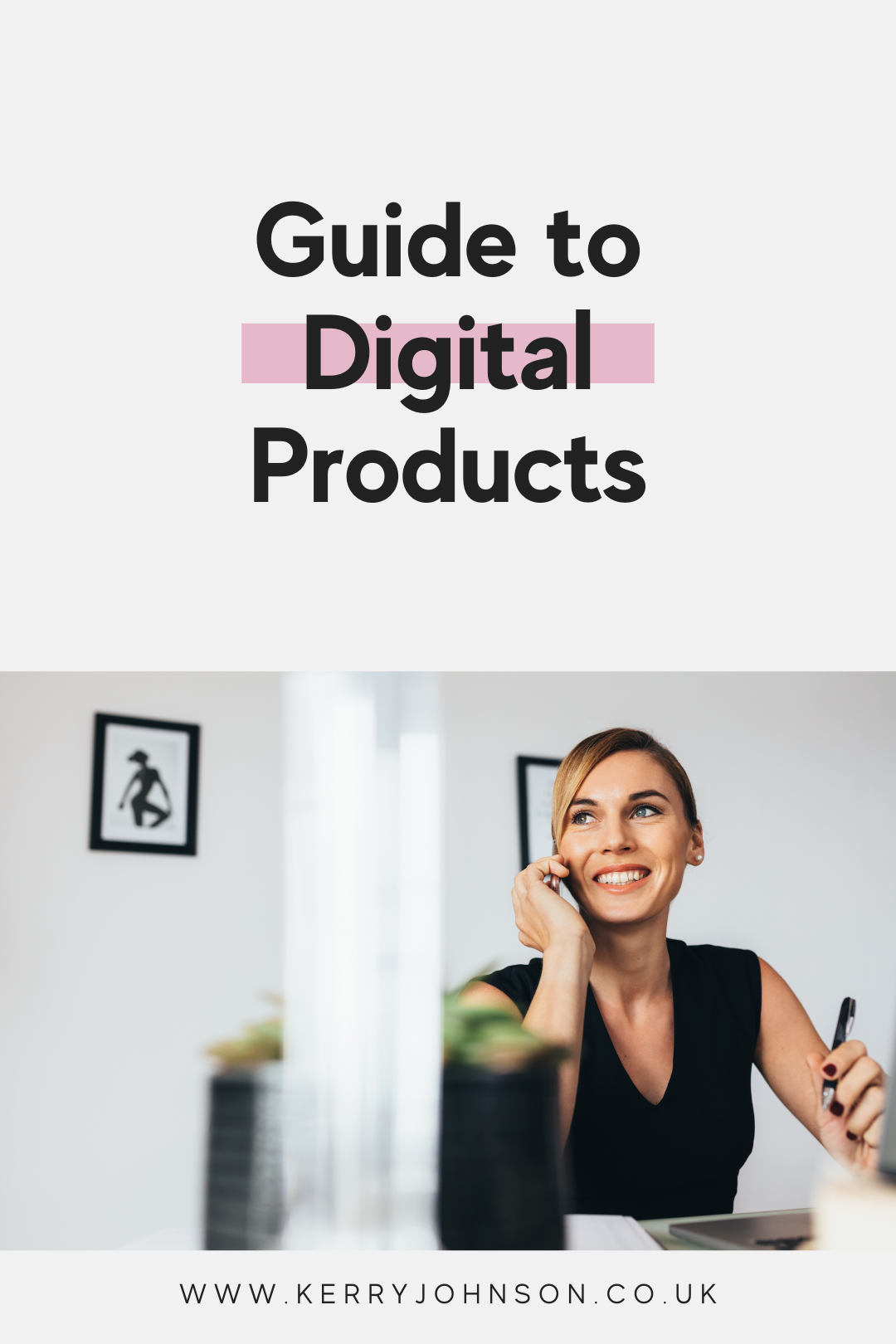Digital products can be a great source of recurring revenue. Invest your time and efforts in the beginning, create a strong system and you can continue to sell for years to come. As someone who works with new online business owners, creating digital products is one of the things I love to do.
So, what exactly is a digital product? Just as the name suggests, they’re products that are accessed digitally, such as online courses, ebooks, memberships and templates. I first started creating and selling digital products back in 2006, and figured it’s about time I put together a guide for other business owners.
Choosing a Product
First things first, let’s decide what you’re going to create. I’m assuming you already know who your audience is and what they need. If not, it’s time to go back to basics and define this. Remember, you’re creating for your ideal client, not for yourself.
If you’re unsure about what to create, think about the following questions:
· What are you great at?
· What does your ideal client need?
· What do people always ask you for help with?
Your answers to these questions will help you to discover the purpose of your product. Once you know what you want to achieve with it, it will be easier to work out what type of product you’ll sell. Some things will be best delivered in an ebook, others should be formatted as a course, whereas some (such as templates) will be single or grouped file downloads.
Creating the Product
Once you’ve chosen your product, it’s time to get creative. There are two options here – you can create the product yourself, or have someone else do it for you. Depending on what digital product you’ve chosen, there will be different things you need to do during the creation process.
Start with a clear plan – know exactly what you need to do before you start. If your product includes written content, start here. If you’ll be recording videos or creating slides or templates, plan them out beforehand.
For products such as ebooks, templates or swipe files, you’re going to need to choose a design tool. Canva is a great go-to for simple designs. You can also look into InDesign, GIMP, Illustrator, Affinity Publisher and more. If you’ll be recording video, you’ll need to decide whether you will use a camera or your phone, and ensure you have video editing software, such as VSDC, Premiere Pro or DaVinci Resolve.
If you’re looking for a little extra help, you could also consider AI tools like ChatGPT or Magic Write. You can use these tools for a huge number of different things, like writing copy, generating designs and even creating images.
Where to Sell Your Digital Products
If you already have your own website, selling your products here might be the best option (depending on the products you have chosen, of course). There will be no extra cost or subscription fees to do this, so it’s a good choice financially speaking. However, it may not be the best solution for hosting things such as large memberships or online courses.
Instead, you may wish to look at tools such as:
· Kajabi
· Teachable
· Wild Apricot
· Koji
· ConvertKit
· Gumroad
· Stan Store
· Etsy
Tips for Recurring Sales
My biggest tip for digital products is to ensure they’re evergreen – this simply means they are relevant year-round and won’t ‘go out of date’. For example, don’t relate them to one specific season or event. Your products should appeal to people at all times.
They should have a clear purpose and solve a problem your audience has. You need to be able to show people why they need your product. What makes it stand out from others they could buy?
To ensure your digital products are always readily accessible, you should set up a strong funnel system. This starts with initial exposure to your brand, generating qualified leads. As people move through your funnel, they are being set up to buy. The majority of funnels will start with an ad (or other piece of content) that leads to a freebie. After this initial exposure, they are introduced to your signature product, which will help them further.
In order to sell your products, you need to tell a story. Start with your audience’s pain point. What problem do they currently have that your product will solve? This is the first point in your story, which grabs the attention of potential buyers. Next, we move on to the solution. What position will the buyer be in after purchasing your product? How will it change things for them? Once the story ends, the product is introduced and the sale is made.
Have you ever sold a digital product before? I’d love to hear about your experiences.

